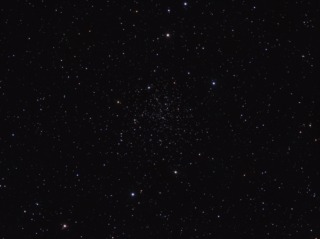
- Constellation: Cepheus
- Right Ascension: 00h 48m 26s
- Declination: +85° 15.3′
- Distance: 5,400 ly
Open cluster located in the constellation of Cepheus. Estimated age of 6+ billion years, most open clusters drift apart after only a few million years. It lies above the plane of the Milky Way, and located further out than our Sun which may account for its longevity.
- Details
- Category: Open Clusters
- Telescope: Explore Scientific 127 Refractor
- Camera: ZWO 1600 MM
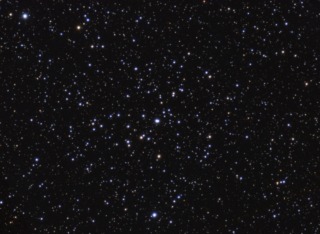
- Constellation: Puppis
- Right Ascension: 07h 37m
- Declination: -13°52'
- Distance: 2497 ly
Open Cluster NGC2423 located in Puppis located about 2,500 light years away. At least one exo-planet has been confirmed orbiting a the red giant star NGC2423-3 with a mass of 10 times of Jupiter.
- Details
- Category: Open Clusters
- Telescope: Explore Scientific 127 Refractor
- Camera: Atik 314l+
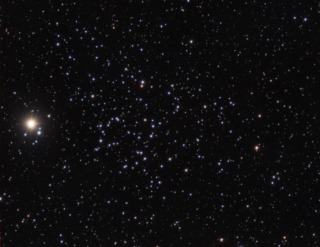
- Constellation: Puppis
- Right Ascension: 08h 10m 37s
- Declination: −12° 49′ 06″
- Distance: 4,400 ly
NGC 2539, an open cluster in Puppis. Estimated age of the cluster is 370 million years and contains several hundred possible members. The cluster lies about 4,400 light years away, the brighter star is 19 Puppis a multiple star system with six reported components The primary being a 4.7 magnitude yellow giant, and is a foreground star at 177 light years.
- Details
- Category: Open Clusters
- Telescope: Explore Scientific 127 Refractor
- Camera: Atik 314l+
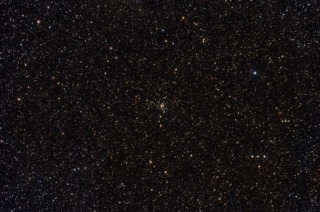
- Constellation: Monoceros
- Right Ascension: 06h 51m 45s
- Declination: +00° 27′ 36″
- Distance: 2,840 ly
NGC 2301, an open cluster located in Monoceros awash in a sea of stars. Estimated age of 168 million years and 2,840 light years away.
- Details
- Category: Open Clusters
- Telescope: EDT 80mm Reftactor
- Camera: ZWO A071 Color
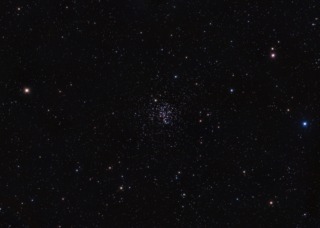
- Constellation: Cancer
- Right Ascension: 08h 51.3m
- Declination: +11° 49′
- Distance: 2,600+ ly
Messier 67 is an open cluster located in the constellation of Cancer. It is one of the older closest open clusters at an estimated age of 3.2 to 5 billion years. Most clusters tend to disperse after their formation, but M67 is expected to stay together for another 5 billion years. It contains at least 500 members and has undergone mass segregation where the more massive stars have migrated towards the center of the cluster.
- Details
- Category: Open Clusters
- Telescope: EDT 80mm Reftactor
- Camera: ZWO A071 Color
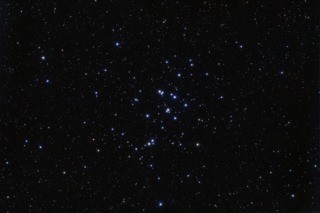
- Constellation: Cancer
- Right Ascension: 08h 40.4m
- Declination: 19° 59′
- Distance: 577 ly
Messier 44, or the Bee Hive Cluster, or originally Praesepe (the manger) is near by open cluster at a distance of 577 light years away. The cluster contains some 350 members. Visible to the naked eye, it has been known since ancient times as a "cloudy" star. Interesting its proper motion and age compares to the Hyades cluster suggesting a possible common origin millions of years ago.
- Details
- Category: Open Clusters
- Telescope: EDT 80mm Reftactor
- Camera: ZWO A071 Color